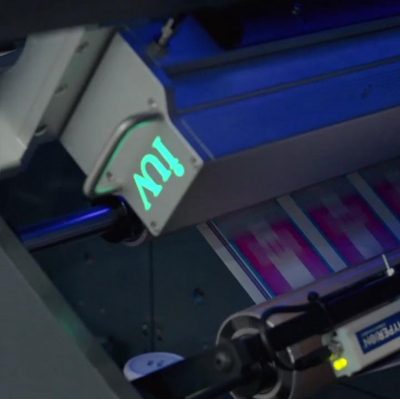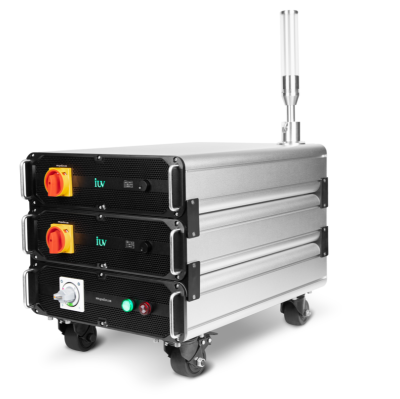In the world of UV curing, UV light is used to quickly cure or dry inks, coatings, and adhesives. This technology is widely used in industries such as printing, packaging, and electronics manufacturing. However, when it comes to choosing between LED UV and traditional mercury vapor UV lamps, one of the key considerations is heat dissipation and its impact on the materials being cured. While both technologies offer high-speed curing, their heat management systems and their effects on materials differ significantly. In this blog, we will explore how heat dissipation in LED UV and traditional UV lamps affects the materials being cured and why these differences are critical for certain applications.

Traditional UV Lamps: High Heat Emission
Traditional UV curing lamps typically use mercury vapor to generate UV light. These lamps operate at high temperatures because:
Mercury vapor lamps generate a lot of heat during the UV light production process. A significant portion of the energy consumed is converted into heat rather than UV light.
The arc tube inside mercury vapor lamps gets extremely hot, often reaching temperatures over 100°C (212°F). As a result, heat is emitted not just from the bulb, but also from the surrounding system.
This heat is typically managed by cooling systems, but the overall heat output of traditional UV lamps remains high.
LED UV: Low Heat Emission
In contrast, LED UV curing systems use light-emitting diodes (LEDs) to generate UV light. LEDs operate at much lower temperatures compared to traditional mercury lamps because:
LEDs produce less heat while emitting light. Most of the energy in an LED UV system is used for UV emission, and only a small portion is lost as heat.
The operating temperature of LED modules is typically between 40°C and 80°C (104°F to 176°F), much lower than the 100°C+ temperatures seen in traditional UV lamps.
Because of this low heat emission, LED UV systems are more energy-efficient and produce far less excess heat during curing.
Heat can have a profound effect on the quality and performance of the materials being cured. In industries such as printing, coating, and electronics, where precision and material integrity are paramount, the amount of heat applied during curing plays a critical role.
Traditional UV: High Heat and Potential Material Deformation
Due to the high temperatures generated by traditional mercury vapor UV lamps, materials that are sensitive to heat can suffer from several issues:
Thermal Deformation: Heat can cause materials such as plastics, films, or thin substrates to warp, shrink, or deform. For example, heat-sensitive packaging materials may lose their shape or dimensional stability when exposed to high temperatures.
Yellowing or Discoloration: In certain applications, prolonged exposure to heat can cause color degradation or yellowing in coatings and inks, especially for light-colored or transparent substrates.
Surface Cracking or Adhesion Problems: High heat can also lead to the development of micro-cracks on the surface of materials or cause inconsistent adhesion of inks and coatings, especially in cases where thin or delicate substrates are involved.
In short, traditional UV curing systems, with their higher heat output, may require more careful material selection and added cooling measures to prevent thermal damage.
LED UV: Controlled, Low Heat for Sensitive Materials
In contrast, LED UV curing systems, with their low heat emission, offer several advantages when working with heat-sensitive materials:
Minimal Thermal Impact: Since LED lamps emit much less heat, they can cure materials without causing significant thermal damage. This makes LED UV the preferred choice for sensitive substrates like plastics, films, paper, and electronics components, which are prone to heat-related issues.
Reduced Warping and Shrinkage: Materials are less likely to warp, shrink, or deform during the curing process, ensuring that the final product maintains its integrity.
Improved Material Compatibility: LED UV systems can be used with a wider variety of materials, including those that cannot withstand the high temperatures of traditional UV curing lamps. This opens up new opportunities in industries like flexible packaging, printed electronics, and label printing.
More Precise Curing: Because of the lower heat output, LED systems can provide more precise and uniform curing on temperature-sensitive substrates without the risk of overheating, improving overall print quality and adhesion consistency.

Traditional UV: Higher Energy Consumption and Cooling Costs
Traditional mercury vapor UV lamps require significantly more energy to operate, not just for producing UV light, but also for managing the heat output. As mentioned earlier, a large portion of the energy is wasted as heat. This results in:
Higher Energy Bills: The need for high energy to produce UV light, combined with energy-consuming cooling systems, makes traditional UV systems more expensive to operate.
Increased Environmental Impact: The high energy consumption also increases the overall environmental footprint of the system, as more electricity is required to power the system and cool it down.
LED UV: Lower Energy Use and Reduced Cooling Needs
In contrast, LED UV curing systems are much more energy-efficient:
Lower Heat Generation: Since LEDs produce minimal heat, they do not require as much power for cooling systems, reducing the overall energy consumption.
Energy Savings: LED UV systems typically use around 50-70% less energy than traditional UV lamps, offering significant operational cost savings.
Reduced Environmental Footprint: The lower energy consumption and reduced cooling needs of LED UV systems translate to a smaller carbon footprint, making LED UV an environmentally friendly choice.
Another key advantage of LED UV systems is their ability to tailor the curing process more precisely. Traditional UV systems often require manual adjustments for temperature control and may struggle to offer the fine-tuned curing needed for sensitive materials. On the other hand, LED UV systems provide:
Precise Light and Heat Control: LED UV systems can be fine-tuned to deliver just the right amount of UV energy for curing, without overheating the material.
Consistent and Reliable Results: With minimal thermal fluctuations, LED UV systems can consistently provide high-quality results, even on challenging materials.
Due to their lower heat generation, LED UV curing systems are increasingly used in industries where material sensitivity to heat is a critical factor. Key applications include:
Flexible Packaging: LED UV curing ensures that thin films and flexible materials remain intact, without distortion, and are cured with minimal heat impact.
Printed Electronics: Components like flexible circuits and smart packaging require precision curing with low heat to avoid damaging delicate materials.
Cosmetics and Pharmaceuticals: Labels and packaging that use heat-sensitive inks can benefit from LED UV’s precise curing without causing degradation.
3D Printing: LED UV can cure resins in 3D printing applications where excessive heat could deform fine structures.







